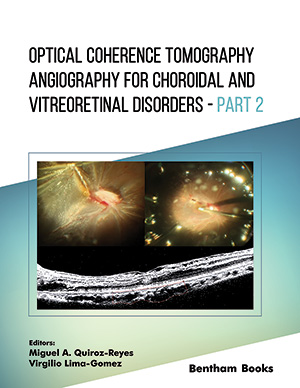Abstract
Background: T-regulatory cells (Tregs) play an important role in maintaining homeostasis by attenuating the cytokine response to T-cell receptor (TCR) stimulation and by suppressing the functioning of neighboring immune cells. In Human Immunodeficiency Virus (HIV) infection, Tregs can be either beneficial, by suppressing generalized T-cell activation, or detrimental, by suppressing protective anti-HIV cell-mediated immunity. An imbalance of Tregs and effector T-cells can blunt immune responses to malignant cells or facilitate inflammation-mediated pathologies.
Objective: The purpose of our study was to explore the possible correlation between Tregs’ concentration and HIV infection’s parameters as well as the development of hematological and solid malignancies.
Methods: In a longitudinal prospective study, ex vivo phenotyping of fresh peripheral blood mononuclear cells from patients with primary HIV infection was performed at baseline. All patients were then followed up every 3 months and the development of solid or hematological malignancies was noted.
Results: A total of 155 patients were included in the study and the median follow-up period was 64 months. Treg counts were significantly higher among males, patients with high viral load (>350 copies/ml) and patients with virological failure to antiretroviral treatment (ART). Linear regression analysis showed a significant negative correlation between Treg levels and CD4 (+) T-cell counts. Patients with neoplasia had lower levels of Tregs while increasing levels showed a negative correlation with the development of neoplasia.
Conclusion: In our population of HIV-infected patients, high levels of Tregs were associated with disease progression, and low baseline levels were associated with a higher probability of developing neoplasia.
Keywords: HIV, cancer, lymphoma, t-regulatory cells, tregs, neoplasia.
[http://dx.doi.org/10.3389/fimmu.2017.00580] [PMID: 28588579]
[http://dx.doi.org/10.1111/imr.12066] [PMID: 23772614]
[http://dx.doi.org/10.1016/S0952-7915(00)00104-7] [PMID: 10899031]
[http://dx.doi.org/10.1016/j.chom.2016.02.012] [PMID: 26962940]
[http://dx.doi.org/10.1128/CMR.14.4.753-777.2001] [PMID: 11585784]
[http://dx.doi.org/10.1097/00002030-200309050-00006] [PMID: 12960820]
[http://dx.doi.org/10.1182/blood-2003-09-3333] [PMID: 15117761]
[http://dx.doi.org/10.1089/108729103321619755] [PMID: 12737638]
[http://dx.doi.org/10.1016/S0163-4453(94)91151-7] [PMID: 7884220]
[http://dx.doi.org/10.1097/MD.0000000000005769] [PMID: 28121924]
[http://dx.doi.org/10.1016/j.phrs.2018.01.005] [PMID: 29331332]
[http://dx.doi.org/10.1016/j.jmii.2013.08.002] [PMID: 24064287]
[http://dx.doi.org/10.1007/978-981-10-5765-6_10] [PMID: 29052137]
[http://dx.doi.org/10.1111/j.1468-1293.2007.00471.x] [PMID: 17561879]
[http://dx.doi.org/10.1371/journal.pone.0129550] [PMID: 26083524]
[http://dx.doi.org/10.1046/j.1365-2362.2001.00934.x] [PMID: 11903495]
[http://dx.doi.org/10.1111/hiv.12080] [PMID: 24007498]
[http://dx.doi.org/10.1097/01.cco.0000174036.46785.8f] [PMID: 16093799]
[http://dx.doi.org/10.1007/s12029-013-9543-1] [PMID: 24014082]
[http://dx.doi.org/10.1007/978-3-030-03502-0_8] [PMID: 30523626]
[http://dx.doi.org/10.1097/00001622-199609000-00009] [PMID: 8914805]
[http://dx.doi.org/10.1002/ijc.31722] [PMID: 29992553]
[http://dx.doi.org/10.1056/NEJM199803263381301]
[http://dx.doi.org/10.1097/QAD.0000000000000062] [PMID: 24072194]
[http://dx.doi.org/10.1016/j.bpobgyn.2004.10.002] [PMID: 15778115]
[http://dx.doi.org/10.3389/fimmu.2017.00605] [PMID: 28603524]
[PMID: 7636184]
[http://dx.doi.org/10.3389/fimmu.2015.00217] [PMID: 26029205]
[http://dx.doi.org/10.1016/j.cell.2008.05.009] [PMID: 18510923]
[http://dx.doi.org/10.1146/annurev-immunol-020711-075043] [PMID: 22224762]
[http://dx.doi.org/10.1146/annurev.immunol.021908.132723] [PMID: 19302048]
[http://dx.doi.org/10.3389/fimmu.2018.02555] [PMID: 30455700]
[http://dx.doi.org/10.1038/ni1178] [PMID: 15785760]
[http://dx.doi.org/10.1126/science.1155209] [PMID: 18436744]
[http://dx.doi.org/10.1128/JVI.01768-07] [PMID: 17855537]
[http://dx.doi.org/10.1038/ni1181] [PMID: 15785761]
[http://dx.doi.org/10.3109/00365521.2016.1170875] [PMID: 27436030]
[http://dx.doi.org/10.1371/journal.pone.0033989] [PMID: 22448284]
[http://dx.doi.org/10.1016/j.meegid.2018.01.015] [PMID: 29413883]
[http://dx.doi.org/10.1016/j.virol.2017.01.018] [PMID: 28157548]
[http://dx.doi.org/10.1093/infdis/jiu188] [PMID: 24664171]
[http://dx.doi.org/10.3389/fimmu.2016.00192] [PMID: 27242797]
[http://dx.doi.org/10.1089/aid.2013.0075] [PMID: 23815575]
[http://dx.doi.org/10.1128/JVI.00993-12] [PMID: 22811537]
[http://dx.doi.org/10.1182/blood-2012-07-409755] [PMID: 23043072]
[http://dx.doi.org/10.1073/pnas.0611423104] [PMID: 17360656]
[http://dx.doi.org/10.1093/intimm/dxn146] [PMID: 19208751]
[http://dx.doi.org/10.1089/aid.2006.0162] [PMID: 17411377]
[http://dx.doi.org/10.1128/JVI.05608-11] [PMID: 21880771]
[http://dx.doi.org/10.3389/fimmu.2018.00734] [PMID: 29706961]
[http://dx.doi.org/10.1089/aid.2008.0140] [PMID: 19239357]
[http://dx.doi.org/10.1089/aid.2011.0113] [PMID: 21834749]
[http://dx.doi.org/10.1128/JVI.00520-08] [PMID: 18579608]
[http://dx.doi.org/10.1182/blood-2010-12-323162] [PMID: 21436067]
[http://dx.doi.org/10.1158/2326-6066.CIR-15-0263] [PMID: 27045023]
[http://dx.doi.org/10.1084/jem.20051511] [PMID: 16230475]
[PMID: 30498624]
[http://dx.doi.org/10.1111/cas.14069] [PMID: 31102428]
[http://dx.doi.org/10.1371/journal.pbio.0020198] [PMID: 15252446]
[http://dx.doi.org/10.1371/journal.pone.0010788] [PMID: 20520721]
[http://dx.doi.org/10.4049/jimmunol.175.1.32] [PMID: 15972628]
[http://dx.doi.org/10.1182/blood-2006-05-021576] [PMID: 16902147]
[http://dx.doi.org/10.1128/JVI.01758-10] [PMID: 21047964]
[http://dx.doi.org/10.1093/infdis/jis236] [PMID: 22427677]
[http://dx.doi.org/10.1371/journal.pone.0011762] [PMID: 20668701]
[http://dx.doi.org/10.1111/j.1365-2567.2008.02978.x] [PMID: 19016904]
[http://dx.doi.org/10.1097/QAD.0b013e32825eab8b] [PMID: 17630546]
[http://dx.doi.org/10.1371/journal.pone.0015924] [PMID: 21305005]
[http://dx.doi.org/10.4049/jimmunol.174.7.4407] [PMID: 15778406]
[http://dx.doi.org/10.1097/01.aids.0000171401.23243.56] [PMID: 15905668]
[http://dx.doi.org/10.1097/QAD.0b013e328319edc0] [PMID: 19005268]
[http://dx.doi.org/10.1097/QAD.0b013e32833c93ce] [PMID: 20651586]
[http://dx.doi.org/10.1111/nyas.13625] [PMID: 29566262]
[http://dx.doi.org/10.18632/oncotarget.9130] [PMID: 27153545]




























